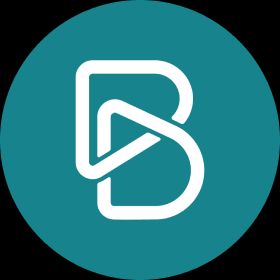Although Minoxidil (Rogaine) is usually safe, it may cause side effects like scalp discomfort, unexpected hair growth, or a temporary shedding of hair.

Rogaine is the only topical ingredient approved by the Food and Drug Administration (FDA) for regrowing hair. Rogaine can treat hair loss from androgenetic alopecia, also known as male or female pattern hair loss (FPHL).
Researchers are still examining its ability to treat other hair loss conditions, like chemotherapy-related hair loss and alopecia areata.
About
FPHL is largely caused by genetics, and it’s thought that estrogen levels play a role because FPHL becomes more common after menopause.
Rogaine is generally considered a safe treatment, and complications are usually mild. Keep reading to learn about the side effects of Rogaine for women as well as alternative treatment options.
Contact dermatitis on the scalp is the most common side effect when using Rogaine. Contact dermatitis usually occurs within minutes to hours after application. It causes symptoms such as:
- itchiness
- flaking skin
- redness
- irritation
- burning
The first time you use Rogaine, apply it to a small part of your scalp and wait 24 hours to see if symptoms develop before using it over your entire head.
Rogaine can lead to unwanted hair growth on the face if the medication comes into contact with it.
Unwanted hair growth occurs
It generally takes about
In very rare cases, you can develop generalized hypertrichosis, which is increased hair growth in areas not directly exposed to the treatment. It’s most common in adolescents and children.
Rogaine can cause a form of temporary hair loss called minoxidil-induced telogen effluvium.
Your hair cycles through four stages of growth:
- anagen, the growing phase
- catagen, transition phase
- telogen, resting phase
- exogen, shedding phase
Along with stimulating the growth phase, Rogaine can also shorten the resting phase, which leads to increased shedding. This shedding usually occurs 2 to 8 weeks after treatment starts.
An older
Rogaine usually has an insignificant effect on your blood pressure, but some people may experience more severe symptoms.
A
It should be noted, however, that the preparation used in this study had more than twice the concentration of minoxidil compared to the over-the-counter foam.
The FDA lists Rogaine as a category C pregnancy drug. Drugs in this category haven’t undergone adequate human testing showing that they’re safe for fetal development, and animal studies suggest possible dangers.
Breastfeeding women should also avoid using Rogaine due to its potential to enter breast milk.
Although it’s fairly rare, it’s possible to develop an allergic reaction to Rogaine. Allergy symptoms usually appear quickly and include:
- hives
- itchiness
- inflammation
- rash
It’s possible to be allergic to minoxidil itself or another ingredient found in Rogaine called propylene glycol. If you’re allergic to propylene glycol, you can try using the foam form of Rogaine that doesn’t contain this ingredient. If you’re allergic to minoxidil, you should cease this treatment altogether.
Studies have found that around
A
Other reported symptoms with an unknown incidence rate include:
As an oral medication, minoxidil is used to lower blood pressure. Usually, topically applied minoxidil has an
If you’re taking guanethidine to control your blood pressure, the FDA recommends being at a hospital the first time you use minoxidil to monitor changes in your blood pressure.
Rogaine and other brands of minoxidil are the only FDA-approved medications for treating hair loss in women.
The oral medication finasteride is FDA-approved for men over the age of 18 to treat hair loss. While it’s commonly prescribed for
Finasteride is particularly dangerous for women who are pregnant, since it may harm male fetuses.
Other potential treatment options for hair loss in women include:
- Targeting the underlying cause. In some cases, your hair loss may be caused by a treatable condition, like a thyroid hormone imbalance. Your doctor can help you figure out if your hair loss is genetic or has another cause.
- Wearing wigs. Many women experiencing balding choose to wear a wig to cover their hair loss.
- Making dietary changes. If your balding is caused by a nutrient deficiency, eating an overall healthy diet may help stimulate hair growth. Focus on foods high in protein, vitamin A, iron, B vitamins, and vitamin C.
- Undergoing a hair transplant. Follicular unit transplantation and follicular unit extraction are two types of hair transplants that take follicles from one part of your scalp use them to cover balding areas in another.
Rogaine is available over the counter. Even so, if you’re dealing with hair loss, it’s a good idea to talk with your doctor before starting treatment. Your doctor can help you rule out other causes of hair loss that may be treatable, such as low thyroid hormone levels or a nutrient deficiency.
You should also visit your doctor if:
- your hair loss is sudden
- your head itches or burns
- your hair is falling out in clumps
- you have bald patches
Rogaine can help women treat genetic hair loss. In women, genetic hair loss usually manifests as a gradual thinning along the part in the hair.
Rogaine is generally considered safe, but in some cases it can cause side effects, such as scalp irritation, unwanted hair growth, or temporary shedding.
If you notice any of these symptoms or anything else concerning, contact your doctor right away.









